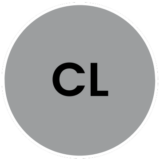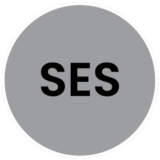Conference
American Association for Cancer Research® (AACR) Annual Meeting 2025
Breaking barriers in spatial biology – one platform, endless possibilities
Register for the dinner reception Book a meeting with usApril 27 - 30
Chicago, IL
Visit our booth #3249
Discover true spatial multiomics at #AACR25
Lunaphore, a Bio-Techne brand, will debut its latest advancements in spatial proteomics and multiomics workflows at the American Association for Cancer Research® (AACR) Annual Meeting 2025. These innovations include the launch of the first fully-automated, same-section multiomics workflow for fixed-frozen tissue. This groundbreaking workflow enables simultaneous detection of virtually any RNA and protein targets using ACD’s RNAscope™ HiPlex Pro technology and sequential immunofluorescence (seqIF™) with standard, non-conjugated primary antibodies.
Find us at the AACR Annual Meeting 2025 to experience a live COMET™ demonstration, attend our dinner symposium, explore research posters featuring COMET™ data and discover more about our novel spatial proteomics technologies.
Visit us at booth #3249
Instrument demo and raw data
Stop by the Lunaphore booth to meet our team, get a live COMET™ instrument demonstration and freely analyze raw multiomics and proteomics datasets.
Arrange a meeting with our team of product specialists to learn more about our solutions and technology.
Book a meeting with us at the AACR Annual Meeting 2025 →
Dinner Reception
From lab to life: revolutionizing cancer research with automated spatial biology
We are excited to bring together the spatial biology community to discuss cutting-edge science, share exciting updates, and enjoy cocktails at our exclusive dinner reception affiliated with the American Association for Cancer Research® (AACR) Annual Meeting 2025.
Join us to learn and engage with technical experts and leaders in spatial biology and immuno-oncology research. Connect with Lunaphore scientists for insightful discussions. Registration is free, but seats are limited.
Date, time and location:
Date: April 28
Time: 6 PM – 11 PM
Location: American Book Company, Marriott Marquis (adjacent to the conference center)
From lab to life: revolutionizing cancer research with automated spatial biology
We are excited to bring together the spatial biology community to discuss cutting-edge science, share exciting updates, and enjoy cocktails at our exclusive dinner reception affiliated with the American Association for Cancer Research® (AACR) Annual Meeting 2025.
Join us to learn and engage with technical experts and leaders in spatial biology and immuno-oncology research. Connect with Lunaphore scientists for insightful discussions. Registration is free, but seats are limited.
Date, time and location:
Date: April 28
Time: 6 PM – 11 PM
Location: American Book Company, Marriott Marquis (adjacent to the conference center)
6:00 PM
Doors open – Dinner and networking
6:30 PM
Shaping the future of cancer care with spatial multiomics
Bio-Techne Spatial Biology Division leadership
6:45 PM
Studying EBV+ Hodgkin lymphoma beyond the H&E: Single-cell hyperplex spatial proteomics reveals immune complexity following IL-23 inhibition, offering translational insight into immune modulation
Dr. Janusz Franco-Barraza, Fox Chase Cancer Center
7:05 PM
Sound explodes: quiet Layers Ascend
Dr. Jared K. Burks, MD Anderson Cancer Center
7:25 PM
The power of two: combining RNAscope and sequential immunofluorescence for spatially resolved pathology
Dr. Frederik De Smet, KU Leuven
7:45 PM
Panel discussion
From 8:15 PM
Cocktails and networking
Posters and Presentations
April 27
Spotlight Presentation
2:00 - 2:30 PM
Discovery Life Science Booth #2801
Speaker

Lily Reed
Technical Sales Specialist
Lunaphore Technologies
Poster Presentation
2:00 - 5:00 PM
Poster #166 / 17 - Section 7
- Background: Cancer-associated fibroblasts (CAFs) are a highly diverse cell population that plays a crucial role in shaping the tumor microenvironment (TME). Their spatial interactions within the TME remain to be systematically characterized, and the factors driving their phenotypic heterogeneity are not yet fully understood. Recent advancements in single-cell spatial transcriptomics technologies and cell segmentation approaches enable the precise measurement of thousands of transcripts at subcellular resolution. Combined with innovative bioinformatics, these advancements have unlocked unprecedented opportunities for in-depth characterization of CAFs and their interactions within the TME.
Methods: We conducted a comprehensive spatial transcriptomic analysis of CAFs across 8 cancer types, using the CosMx and MERSCOPE platforms to profile nearly 6 million cells as part of our discovery cohorts. We developed a novel computational method to spatially cluster CAF subpopulations and defined four distinct spatial CAF subtypes. We further examined their phenotypic differences, spatial niche organization, and interactions with neighboring cells. Additionally, we investigated the influence of CAF subtypes on immune cell phenotypes and infiltration levels. To validate our findings, we employed multiple spatial platforms, including Visium, Xenium, COMET, CODEX, and IMC, to ensure reproducibility across diverse technologies. Moreover, we performed correlative studies in large-cohorts with rich clinical data to evaluate the clinical significance of these CAF subtypes.
Results: Our approach provided an unprecedented high-resolution examination of the spatial phenotypes of CAFs in large, complex tissues, uncovering novel insights. We comprehensively characterized CAFs across various solid tumor types and identified four conserved spatial CAF subtypes. These subtypes are characterized by distinct cell organizational patterns, neighboring cell compositions, interaction networks, and transcriptomic features. Moreover, they demonstrate significant correlations with the abundance, distribution, and phenotypes of tumor-infiltrating immune cells, as well as associations with tumor histopathological features and clinical outcomes.
Conclusions: Our study provides a pan-cancer, high-resolution characterization of CAF spatial organization and interactions in solid tumors and identified conserved spatial CAF subtypes linked to distinct organizational patterns. Our findings reveal that the transcriptomic states and phenotypes of CAFs are significantly shaped by their interactions with neighboring cancer and immune cells. Beyond offering novel insights into the spatial heterogeneity of CAFs, this work paves the way for developing strategies to effectively target and modulate CAFs for therapeutic benefit.
Speaker

Yunhe Liu
UT MD Anderson Cancer Center, Houston, TX, United States
Poster Presentation
2:00 - 5:00 PM
Poster #660 / 26 - Section 28
- Introduction: Pancreatic ductal adenocarcinoma (PDAC) is characterized by a high potential for metastatic dissemination, contributing to its poor 5-year survival. Irreversible electroporation (IRE) is an interventional technique that employs short, high-voltage electric pulses to induce cell death. This study was aimed at investigating the abscopal effect of combined IRE and anti-PD-1 therapy in the setting of liver metastasis and possible mechanisms action.
Methods: Female C57BL/6 mice were inoculated with murine Kras* PDAC cells in the pancreas and the liver. The primary tumor in the pancreas was treated with IRE while the distal liver metastasis was untreated by IRE. Following six intraperitoneal doses of anti-PD-1 (100 µg/100 µL/injection, administered every other day), all mice were euthanized 14 days after IRE. Both the IRE-treated pancreatic tumors and the liver metastases were collected for pathological analysis. Tumor tissue microarrays were prepared, and multiplex immunofluorescence staining was performed using the Lunaphore COMET™ system. Additionally, to evaluate the impact of IRE on macrophage phagocytosis of pancreatic tumor cells, macrophages were co-cultured with either control or IRE-treated CFSE-pre-stained pancreatic tumor cells, and phagocytosis effect was assessed using flow cytometry. To explore the impact of IRE on gene expression pathways, Kras* PDAC cells were treated with IRE (400 V, 20 pulses), and cells were collected 4 hours post-treatment. Total RNA was extracted for RNA sequencing analysis.
Results: Results from the PDAC liver metastasis mouse model demonstrated enhanced antitumor activity in both the IRE-treated pancreatic tumors and the untreated liver metastases following combined IRE and anti-PD-1 treatments. Multiplex immunofluorescence analysis of both tumor types revealed a significant accumulation of F4/80+ macrophages in the interface between necrotic tissue (caused by IRE) and viable tumor tissue. Additionally, CD8+GzmB+ T cells and B220+ B cells were significantly increased in the tumor tissues of mice treated with the combination of IRE and αPD-1. In vitro macrophage phagocytosis assays further demonstrated that macrophages were more effective at phagocytosing IRE-treated Kras* PDAC cells compared to untreated control cells. Moreover, RNA sequencing of KRAS* PDAC cells treated with IRE (400 V, 20 pulses) identified 908 differentially expressed genes (DEGs) (fold change > 2, FDR < 0.01) compared to untreated controls. Ingenuity Pathway Analysis revealed that these DEGs were associated with TNFα signaling via the NFκB pathway and IL6-JAK-STAT3 signaling, highlighting the expression of key inflammatory genes essential for immune responses.
Conclusions: These findings indicate that combining IRE with PD-1 blockade enhances a robust antitumor immune response, resulting in systemic antitumor activity and a strong abscopal effect.
Speaker

Chun Li
UT MD Anderson Cancer Center, Houston, TX, United States
Poster Presentation
2:00 - 5:00 PM
Poster #754 / 6 - Section 32
- Over the past two decades, genomic alterations have become important biomarkers for predicting response to targeted therapies; however, the emergence of immunotherapy, antibody-drug conjugates and multispecifics may require a different class of biomarkers that can quantify and localize drug targets within tumor and immune cells. Genomic testing frequently lacks correlation with protein expression, fails to capture membranous versus cytoplasmic localization, and has limited ability to decipher spatial interactions between targets. Multiplex immunofluorescence (mIF) is an established technology capable of quantifying and capturing the subcellular localization of dozens of proteins (>25 proteins per slide), enabling parallel assessment of a large number of drug targets. Here we describe a framework for leveraging high-plex spatial proteomics with an AI-driven platform to develop rational approaches for evaluating individual targets and combinations of targets within and across disease indications. We designed a 30-plex mIF panel to perform sequential immunofluorescence (seqIF™) on the COMET™ platform to profile known tumor antigens and targets (n = 18) currently in development along with the tumor microenvironment (TME), immune cells, and key signaling cascades (n = 12). We tested this panel on 217 samples (>1,700,000 cells) from lung (n = 90), gastric (n = 11), and colorectal (n = 68) cancers, as well as normal tissue specimens (n = 48, 22 sites). Utilizing Nucleai’s deep-learning-based multiplex imaging analysis pipeline, we quantified the protein abundance, localization, and interactions among 9 different cell types. Tissue areas were divided into subregions and neighborhoods to characterize localization of these cell types to distinct areas including the tumor core (TC), tumor invasive margin interface (TIM), and stroma. We confirmed known drug targets with historical approvals in each of these indications, which validated that the pipeline was able to correctly identify key targets based on subcellular localization, spatial proximity analysis, and analysis of off-target cell type expression. We also identified potential combination partners for multi-specifics based on target colocalization, which were found to have reductions in off-target cell colocalization, as determined by protein expression in the right compartment and in the expected cell types. Nucleai’s platform enables deep spatial proteomic profiling by deriving AI-driven insights for actionable characterization of protein interactions and patient heterogeneity across tissues. We demonstrate that this framework can aid in the prioritization and derisking of potential drug targets used by key classes of therapeutics currently in development.
Speaker

Michael Mints
Nucleai, Tel Aviv, Israel
Poster Presentation
2:00 - 5:00 PM
Poster #763 / 15 - Section 32
- Background: The events mediating the transition of normal-appearing tissue (NAT) to adenomatous premalignant lesions (aPMLs) and minimally or locally invasive lung adenocarcinoma (LUAD) are very poorly narrated.
Methods: We analyzed matching NATs, aPMLs, and LUADs from 25 patients using integrative approaches including spatial transcriptomics (ST, n=56 tissues), single-cell RNA-sequencing of fixed cells (scFFPE-seq) from matched uninvolved NAT, aPMLs and LUADs (n = 75 tissues), and whole exome sequencing (WES, n=79). A subset of tissues was also analyzed by sequential immunofluorescence (seqIF, COMET) and subcellular spatial gene expression (Xenium, n=41).
Results: We performed multimodal spatial omics analysis of lung tissues along the NAT-aPML-LUAD continuum. After quality control, we retained and analyzed 477,283 spots by ST, 401,636 cells by scFFPE-seq, and more than 1.75 million cells by Xenium. Paired aPMLs and LUADs showed distinct spatial transcriptional patterns, lineage plasticity, and cell states. We derived nine metaprograms using scFFPE-seq data of epithelial cells, which showed robust alignment with sub-cell type and states from the ST data. Integrative analysis of ST and scFFPE-seq demarked metaprograms that denote alveolar type 1 (AT1) and type 2 (AT2), alveolar intermediate cell (AIC), and tumor cells in the cellular path to aPML and LUAD. Both LUAD and aPML regions highly expressed signatures of KRT8+ AICs (KACs), which denoted transitionary states between NATs and aPMLs or LUADs. Trajectory analysis demonstrated two alveolar transition paths, namely AT2-AIC-AT1 and AT2-KAC-lung tumors. In contrast to LUADs, early aPMLs and KAC-rich NAT expressed proinflammatory metaprograms, suggesting that interplay between KAC and inflammation is contextual and likely involved in tumor initiation in the peripheral lung. Spatial single-cell neighborhood analysis by Xenium platform concordantly showed that KACs were proximal to proinflammatory macrophages and cancer-associated fibroblasts (CAFs). Specifically, IL-1B+ proinflammatory macrophages and inflammatory CAFs were observed to be enriched in the neighborhood of tumor cells in aPMLs. Multimodal analysis of a tobacco lung carcinogenesis mouse model showed that KACs displayed increased NF-kB signaling and expression of the Il1b receptor Il1r1. Importantly, treatment with IL-1b or macrophage co-culture enhanced growth of KAC-enriched organoids, and IL-1b neutralization in vivo led to KAC regression.
Conclusions: We generated a multimodal spatial and single-cell atlas of the transition of normal tissue to aPML and LUAD. This comprehensive atlas uncovered critical interactions between tumor progenitors and inflammation that inspire initiation of lung lesions and inform of unique and targetable cellular states for early detection and interception of LUAD.
Speaker

Fuduan Peng
UT MD Anderson Cancer Center, Houston, TX, United States
April 28
Poster Presentation
9:00 AM - 12:00 PM
Poster #2073 / 9 – Section 32
- Spatially resolved technologies are transforming cancer research by enabling the simultaneous visualization of molecular and cellular processes within tissue contexts. We performed a comprehensive benchmarking of various multiplex immunofluorescence (IF) platforms, including COMET™ and MILAN, and spatial transcriptomics technologies, including RNAscope™ and Xenium, and their combinations to evaluate their performance, compatibility, and potential for deep phenotypic profiling. Tissues from multiple cancer types were subjected to multiplex IF using the COMET and MILAN platforms. Complementary spatial transcriptomics analyses were performed using RNAscope and Xenium on the same sections. Performance metrics and cross-platform reproducibility were systematically assessed and the added value of evaluating protein and RNA markers simultaneously was also evaluated. To facilitate data processing and integration, we developed a novel bioinformatics software, DISSCOVERY, specifically designed for the integrated analysis of high-dimensional multiplex IF and spatial transcriptomics data. Each multiplex IF and spatial transcriptomics platform demonstrated unique strengths and limitations, both individually and in combination. Initial evaluations focused on the performance of each platform independently, followed by assessments of their combined application on the same tissue section. Notably, the combination of the Xenium and MILAN platforms provided unparalleled flexibility and scalability, enabling high-throughput analysis of both large marker panels and extensive sample sets. The COMET platform, which integrates RNAscope with multiplex IF, also proved highly valuable for its speed and automation, particularly in validating newly discovered mechanisms. Integration of these data through the DISSCOVERY software enabled seamless cross-platform analysis, uncovering spatial co-localization patterns and gene-protein associations. This approach allowed us to identify novel cellular niches and functional interactions across various cancer types, highlighting the powerful synergy of multiplex IF, IHC and spatial transcriptomics for advancing our understanding of cancer biology. Overall, our benchmarking underscores the complementary capabilities of multiplex IF and spatial transcriptomics technologies in dissecting the tumor microenvironment. The DISSCOVERY pipeline streamlines data integration, facilitating multi-omic insights into cancer biology. These findings provide a roadmap for selecting and combining spatial technologies to advance cancer research.
Speaker

Jonathan Chui, Ph.D.
Rearch Associate - Translational Cell & Tissue Research Unit
KU Leuven
Poster Presentation
9:00 AM - 12:00 PM
Poster #2093 / 29 - Section 32
- Glioblastoma (GBM) is the most aggressive primary neuroepithelial tumor diagnosed in the United States with approximately 14,000 diagnoses each year. Patients with GBM have a poor prognosis and only 5% of these patients survive for more than 5 years. Diagnosis of GBM requires tumor biopsies with consideration of histopathological and molecular characteristics. Typically, IHC is done using a single-biomarker HRP-DAB detection technique which is not suitable for the simultaneous spatial analysis of multiple biomarkers. Specific markers involved with the histopathology of glioblastomas include Isocitrate Dehydrogenase 1 (IDH1), Epidermal Growth Factor Receptor (EGFR), Insulin Like Growth Factor 1 Receptor (IGF-1R), and a cell proliferating marker, Ki67.
A deeper understanding of the pathology of GBM has the potential to improve early diagnosis and treatment options for patients. The complex nature of the tumor microenvironment (TME) makes spatial multiplex immunohistochemistry (IHC) and immunofluorescence (IF) ideal for visualizing biomarker expression and cellular localization. Emerging automated staining and imaging platforms rely on validated antibodies for accurate marker detection. Lunaphore COMET™ is a fully-automated, high-throughput, hyperplex platform for spatial analysis of Formalin Fixed Paraffin Embedded (FFPE) and frozen tissues. It performs sequential immunofluorescence (seqIF™) assays through cycles of staining, imaging, and elution.
Antibody specificity, sensitivity, and availability for multiplex IF is a critical success factor for TME characterization. We use a systematic process to qualify antibodies for use on COMET™ which includes specificity on a positive tissue sample, sensitivity using different antibody dilutions and elution efficiency using secondary antibody only incubation. In this study, we evaluated IDH1, EGFR, IGF-1R and Ki67 expression in GBM on COMET™. This will streamline multiplex panel development for spatial analysis of GBM to understand biomarker expression at the single-cell level.
Speaker

Jennifer C. Jones
Sr. Product Marketing Specialist
Bio-Techne Corporation
Poster Presentation
9:00 AM - 12:00 PM
Poster #2099 / 2 - Section 33
- Ovarian cancer is the sixth leading cause of cancer-related deaths among women in the United States. Many women (>80%) with OC are diagnosed at an advanced stage and a 5-year survival rate of less than 30%. Newer therapies, such as antibody-drug conjugates (ADCs), have revolutionized the treatment landscape for solid tumors, including ovarian cancer. While platinum-based chemotherapy stays the stalwart in systemic therapy for OC treatment, most of these patients experience recurrence (>50%) despite receiving standard of care therapy. Hence, significant efforts are made to target candidates for a personalized approach to therapy. 9 eligible patients with biopsy confirmed, newly diagnosed, advanced-stage serous EOC deemed appropriate for NACT seen at the University of Alabama at Birmingham Gynecologic Oncology clinic were recruited. EMR was reviewed and demographic, survival, surgery, and tumor response data were collected. Target receptor expression pre and post ADC treatment was also evaluated using IHC staining of the target protein. Actively, we are using spatial transcriptomics and proteomics to assess DNA damage and tumor immune microenvironment (TIME) pre and post NACT. Repair assisted damage detection (RADD) assay, The Lunaphore COMET and Nanostring GeoMx platform will all be utilized to perform this analysis. The RADD assay gives a DNA damage score that will be compared pre- and post-treatment. The Lunaphore COMET antibody staining panel will include antibodies against the surface and intracellular proteins pan-cytokeratin, CD3, CD4, CD5, CD8, CD20, CD25, CD31, CD68, DAPI, Granz B, FOXP3, CXCR3, CXCR5, CCR6, CTLA4, PD-1, PDL1, TIM3, and pan-cytokeratin, allowing us to evaluate changes in subpopulations within the tumor immune microenvironment in response to ADCs in combination with platinum therapy. NanoString GeoMX platform will use targeted transcriptomic sequencing to further evaluate PanCK+ tumor cells, CD20+ B cells, and CD8+ T cells, or subpopulations identified from COMET results. Results Median age of this cohort was 68.5 (52-81), most patients were white (n=7), all patients had stage III or IV disease (n=9). Based on RECIST 1.1 criteria, median change in tumor burden from baseline was -19.31% (+9.81% to -85.64%), showing the impact of NACT. The secondary outcomes of this study are to identify predictive biomarkers as potential therapeutic targets through analysis proteomics and transcriptomics. ADCs have demonstrated potential to monitor change in tumor burden, thereby validating the efficacy of targeted therapy based on protein or receptor expression in OC. Utilizing technologies such as COMET and Nano-string, our results will help us understand the intricacies of NACT therapy in the context of ADCs and contribute to pave the way for a more tailored therapeutic approach.
Speaker

Dhruva Dave
University Of Alabama At Birmingham
Poster Presentation
2:00 - 5:00 PM
Poster #2525 / 4 - Section 1
- Lymphoid malignancies present significant diagnostic challenges due to overlapping immunophenotypic features between tumor cells and reactive background cells, complicating the distinction between indolent lymphomas and benign lymph node hyperplasia [Nicolae A, Hemato, 2024, DOI:10.3390/hemato5030026]. Moreover, some Hodgkin lymphoma (HL) subtypes, such as lymphocyte-rich (LRHL) and nodular lymphocyte-predominant Hodgkin lymphoma (NLPHL) and certain variants of diffuse large B-cell lymphoma (DLBCL), exhibit similar phenotypic profiles despite having different therapeutic implications [PMID: 35741318]. This study aims to leverage sequential immunofluorescence (seqIF™, PMID: 37813886) for the spatial profiling of lymphoma to improve differential diagnosis and to uncover spatial patterns unique to each lymphoma subtype, providing insights into potential predictors of immunotherapy response. Here, we optimized a seqIF™ panel of 21 markers, using antibodies approved for clinical immunohistochemistry (IHC), to phenotype mature B-cell lymphomas on the COMET™ platform. This panel was applied to tissue microarrays prepared from representative cases of DLBCL, HL, indolent lymphomas, and benign lymph node hyperplasia. Each marker of the optimized panel was visually validated by certified pathologists, comparing seqIF™ results against corresponding IHC images. Computation of spatial matrix successfully identified tumor cells and reactive cells using thresholding of fluorescence intensity and cell diameter, particularly in HL and DLBCL cases that exhibited similar immunophenotypes at first glance. This enabled us to map classified cells events back to the tissue sections, allowing direct spatial correlation with stained images for a comprehensive analysis of cell distribution. Ongoing work aims at refining our lymphoma spatial profiles through the integration of spatial transcriptomics readout on the same sample cohort. Together these results highlight the potential of multiplex immunofluorescence (mIF) for the diagnostic phenotyping of lymphoma, transferring clinically validated antibodies into a mIF panel. The ability to assess both phenotypic and spatial characteristics of tumor and reactive cells will enhance our understanding of lymphoma biology and provide new insights into predictive markers for immunotherapy responses.
Speaker

Tania Pannellini, M.D., Ph.D.
Hemopathologist and coordinator of digital pathology lab
European Institute of Oncology (EIO)
Poster Presentation
2:00 - 5:00 PM
Poster #2627 / 30 - Section 4
- Desmoplastic small round cell tumor (DSRCT) is a rare and usually incurable aggressive sarcoma subtype. Less than 20% of patients survive beyond five years with standard of care. All tumor cells harbor a pathognomonic EWS::WT1 fusion protein (FP), but FP-targeted agents are nonexistent. Given the male to female ratio of 6:1, we sought to understand androgen receptor (AR) biology and its role as a therapeutic target in DSRCT. Our preliminary data suggested that a subset of DSRCT cell’s epithelial lineage expressed AR, which is the driver of prostate cancer (PC). A separate subset of DSRCT cells exhibited neural (NE) markers without AR expression. We explored gene expression, chromatin accessibility, and protein expression using multi-omic analyses (n=9) to understand the mechanisms driving AR and NE expression in DSRCT. We identified DSRCT, fibroblasts, endothelial cells, immune cells, and smooth muscle cells in the snRNA-seq data. Using AR and NE signatures, we generated three subsets of DSRCT cells. One subset was high in AR expression, and the other was high in NE markers, but not both. The third subset appeared to exhibit both markers – implying a hybrid phenotype or a poorly differentiated phenotype. To validate protein expression, we used the Lunaphore COMET. In AR-positive tumor nests, AR was localized to the nucleus, suggesting downstream activation of this pathway, and correlated with pan-cytokeratin (Ck) expression – an epithelial marker. Tumor nests marked by neural-specific enolase (NSE), an NE marker, demonstrated little to no expression of AR or Ck. However, patient subsets that harbored a hybrid transcriptomic profile had different cell states within the tumor nests, which were AR/Ck positive or NSE positive, but not both. This suggested that tumors may harbor cells of different cell states. The ATAC-seq data found that Epithelial/AR-positive subtypes were enriched in motifs for nuclear receptors (ARE and GRE). The NE subtype lacked the ARE and GRE motifs. EMT-related motifs were associated with the NE and hybrid subtypes, such as ZEB1, SNAI1, and SNAI2 (Slug). Transcription factor binding prediction showed that ZEB1 had higher activity in the NE subtype, while AR, FOXA2, and GRHL2, a co-regulator of AR, had higher activity in the AR subtype. Although the neuroendocrine subtype in PC usually evolves in response to therapy, how the NE phenotype emerges in DSRCT remains unknown. It has yet to be discovered how transcription factors play a role in the Epithelial/AR and NE in DSRCT dimorphic states. ZEB1 and GRHL2 form a double negative feedback loop, where ZEB1 suppresses GRHL2. This suggests that there may be an interaction between the ZEB1 and AR to regulate epithelial and NE phenotype in DSRCT, which may have implications for treating DSRCT with AR inhibitors.
Speaker

Danh Truong
UT MD Anderson Cancer Center, Houston, TX, United States
Dinner Reception
6:00 - 11:30 PM
American Book Company, Marriott Marquis Chicago
6:00 PM
Doors open – Dinner and networking
6:30 PM
Shaping the future of cancer care with spatial multiomics
Bio-Techne Spatial Biology Division leadership
6:45 PM
Studying EBV+ Hodgkin lymphoma beyond the H&E: Single-cell hyperplex spatial proteomics reveals immune complexity following IL-23 inhibition, offering translational insight into immune modulation
Dr. Janusz Franco-Barraza, Fox Chase Cancer Center
7:05 PM
Sound explodes: quiet Layers Ascend
Dr. Jared K. Burks, MD Anderson Cancer Center
7:25 PM
The power of two: combining RNAscope and sequential immunofluorescence for spatially resolved pathology
Dr. Frederik De Smet, KU Leuven
7:45 PM
Panel discussion
From 8:15 PM
Cocktails and networking
Speakers

Janusz Franco-Barraza, M.D., Ph.D.
Research Assistant Professor & Manager, Spatial Immuno-Proteomics Facility
Fox Chase Cancer Center

Jared K. Burks, Ph.D.
Professor & Associate Director of Shared Resources for the Cancer Center Support Grant (CCSG)
The University of Texas MD Anderson Cancer Center

Frederik De Smet, Ph.D.
Associate Research Professor
KU Leuven

Tania Pannellini, M.D., Ph.D.
Hemopathologist and coordinator of digital pathology lab
European Institute of Oncology (EIO)
April 29
Poster Presentation
2:00 - 5:00 PM
Poster #5300 / 6 - Section 8
- Background: Urothelial Carcinoma (UC) is the tenth most common cancer worldwide, accounting for more than 200 000 deaths annually (Ferlay, 2020, Sung, 2021). Despite advances over the past decade, particularly with the introduction of immunotherapy (ICI) in various disease settings alongside conventional platinum-based chemotherapy, the prognosis for metastatic UC (mUC) remains poor.
Antibody drug-conjugates (ADC) have emerged as a novel treatment option for mUC, offering selective and targeted delivery of cytotoxic agents to cancer cells. ADCs targeting tumor-associated surface proteins including Nectin-4, trophoblastic cell surface antigen 2 (Trop-2) and tyrosine kinase receptor ERBB-2 (HER2), have demonstrated promising efficacy and are all approved for mUC (Wong, 2021, Goodson, 2023). However, the response rate to these ADCs in mUC is limited 25-40% and with a growing portfolio of accessible ADCs, identifying predictive biomarkers to optimize treatment selection remains an unmet medical need.
The use of multiplexed immunofluorescence (mIF) offers deeper insights into tissue microenvironment and can potentially be used to better stratify patients for the various ADC targets in cancer. Recently, an integrated assay combining the sequential IF for protein detection with RNAscope was developed for Lunaphore’s COMET platform. This allows for simultaneous detection of several RNA targets and their corresponding proteins to be analyzed within the same cells. While the ADC target proteins have been shown to be highly expressed in many UC patients, there are limited studies characterizing the spatial expression of these protein targets, especially in combination with their corresponding transcripts.
Methods: The integrated assay of the COMET platform offers a fully automated workflow that includes iterative cycles of staining, imaging and elution facilitating the simultaneous detection of RNA and proteins at single cell resolution. We used custom designed RNAscope probes (ACDBio), a SPYRE antibody panel (Lunaphore) and additional antibodies to detect the ADC-targets Nectin-4, Trop-2 and HER-2, and to spatially map the tumor microenvironment of human FFPE bladder cancer tissues from a cohort of mUC patients.
Results & Discussion: We have optimized the assay for bladder cancer tissues on the COMET platform to detect multiple ADC targets at transcript and protein levels. We aim to employ the integrated multi-omics setup to explore the expression of the ADC targets in sections from a retrospective cohort of mUC patients treated by monotherapy with Enfortumab Vedotin (EV) in the third line. We have already observed differences across patients with regard to Nectin-4, Trop-2 and HER-2 protein expression and aim to better characterize the spatial distribution and expression of these tumor-associated antigens with the inclusion of target transcripts and the association to treatment benefit from EV.
Speaker

Pranauti Panshikar
Doctoral Student
SciLifeLab, Stockholm, Sweden
Poster Presentation
2:00 - 5:00 PM
Poster #5304 / 10 - Section 8
- Checkpoint therapies and engineered immune cell therapies are increasingly becoming the mainstay when it comes to cancer treatments. Continued and improved success of these therapies relies on our deep understanding of the checkpoint marker and immune cell biology, cell-cell interaction in the tumor microenvironment (TME), and immune cell activation. Spatially visualizing the expression of soluble factors such as cytokines and chemokines along with immune cell markers can provide information about the immune cell composition and enable a comprehensive understanding of mechanisms underlying immune cell recruitment, infiltration and exclusion. To address this, we have developed a fully automated spatial multiomics protocol on the COMET™ platform that enables RNA detection using the RNAscope™ HiPlex Pro assay combined with protein detection using sequential immunofluorescence (seqIF™, (Rivest et al, 2023) ) to integrate same-section sequential detection of up to 12 RNAs followed by up to 24 proteins. This workflow allows the detection of any RNA and protein target of interest by utilizing existing RNAscope probes or generating a custom design for any RNA target and use standard, non-conjugated primary antibodies for protein detection. We used Lunaphore’s HORIZON™ software to analyze this multiomics dataset. Here, we have demonstrated the precise spatial profiling of FFPE solid tumors through the detection of key cytokines indicative of activated T cells and macrophages by using cytokine RNA probes targeting IFNG, IL-1B, TNFA, TGFB1, IL-4, IL-6, IL-8, IL-10 among others in combination with cell marker antibodies detecting CD3,CD8,CD4, FOXP3 and CD68.In addition, we were also able to visualize T cell recruiting chemokines and receptors such as CXCL10, CXCL9, CXCL13, CXCL12 and CXCR3, and spatially map tumor-infiltrating T cells within tissue context and with subcellular resolution. To that end, we successfully demonstrated same-slide RNA-protein detection for profiling the TME. Using single-cell spatial multiomics we were able to identify unique phenotypes within the tumors that might directly correlate to immunosuppressive or immunostimulatory microenvironments. Detailed mapping of the cellular components of the TME has the potential to better predict therapeutic response for checkpoint and immune-based therapies.
Speaker

Anushka Dikshit
Sr. Applications Manager
Bio-Techne Corporation, Newark, CA, United States
Poster Presentation
2:00 - 5:00 PM
Poster #5317 / 23 - Section 8
- Background: Colorectal cancer is the second most fatal cancer worldwide, accounting for 9% of all reported cancer deaths, and is the number one cause of death among people under the age of 50. Rapid technical advances in the field of spatial biology are allowing us to gain new insight into colorectal cancer biology and patient heterogeneity, which can help to guide the development of immunotherapies. Using a combination of modalities such as sequential multiplex immunofluorescence (mIF) and spatial transcriptomics (STx) on a colon cancer sample we determined the spatial distribution, phenotype, function, and a cytokine and chemokine profile within the colon cancer tissue.
Experimental Procedure: 5 um FFPE sections were prepared from a colon cancer sample exhibiting moderate to poorly differentiated adenocarcinoma of T3, N0 staging. mIF was performed using Lunaphore COMET with a 20-antibody panel, followed by H&E staining and imaging. An adjacent section was used for STx with the 10x Genomics Visium CytAssist platform. Data was analyzed with Lunaphore Horizon®, 10x Genomics Loupe Browser software and PredxBio SpaceIQ™ unbiased cell typing, microdomain discovery and network biology platform that co-analyzes mIF and STx datasets.
Results: The tumor showed an aberrant growth pattern and a highly proliferated crypt region. Three distinct microdomains in the tumor tissue were discovered: one with high levels of PD-L1+ cells, a second with high levels of NK cells and a third with low levels of infiltrating cells in the lumen and crypt. There was significant presence of VISTA+ and IDO1+ cells throughout the lumen. These cells interacted with CD4+ and CD8+ cells which were found to be present in both lumen and crypt regions. PD-L1 was prominent in the cells found in both lumen and crypt. Finally, NK cells were abundant throughout the lumen and in regions adjacent to the crypt.
Conclusions: Using multimodal spatial imaging and spatial co-analysis of mIF and STx data, we were able to elucidate relationships between different cell types in a complex tumor tissue and assign context to their activities. Despite high levels of NK cells, indicative of a possible active anti-tumor immune response, the tumor has developed an immune evasion mechanism due to the presence of cells expressing high levels of the anti-tumor immune response markers such as PD-L1, IDO1, and VISTA. Based on these results, therapies targeting more than one immune checkpoint protein may yield improved response due to an abundance of the existing NK cells. The transcriptomic profiling reveals a complex relationship between various cytokines secreted by different cell populations which alter the landscape of the tumor microenvironment, facilitating the emergence of an immunosuppressive phenotype.
Speaker

Gaurav Joshi, Ph.D.
Senior Scientist
Nikon BioImaging Lab
Mini Symposium
3:10 - 3:25 PM
Abstract 6362 / Room S100 BC (Grand Ballroom BC) - McCormick Place South (Level 1)
- Glioblastoma remains a highly malignant, inevitably recurring brain tumor with dismal prognosis. Tumor progression is influenced by cellular interactions between the tumor and its microenvironment, yet quantitative data on these interactions, particularly under standard of care therapy, remains sparse. We utilized spatial, single-cell, multiome profiling to map therapy-induced changes in the architecture of >700 paired glioblastoma samples derived from 101 patients at diagnosis and recurrence. This approach categorized patients into groups reflecting specific evolutionary responses to therapy, with implications for prognosis and treatment. Favourable outcomes were linked to shifts towards enriched perivascular, oligodendrocyte-progenitor-like niches with deep tissue infiltration of activated immune cells, whereas poor outcomes correlated with shifts towards an immunosuppressive mesenchymal environment with poor immune infiltration. Finally, while mutations in EGFR/PTEN, or MGMT-promoter methylation influenced tumor evolution, we also identified a defined subset of patients that were more responsive to lomustine after early recurrence. Our findings offer a framework to stratify patient treatment based on tumor and microenvironmental evolution.
Speaker

Frederik De Smet, Ph.D.
Associate Research Professor
KU Leuven
April 30
Poster Presentation
9:00 AM - 12:00 PM
Poster #6468 / 9 - Section 2
- Background: The immune tumor microenvironment (TME) in Epstein-Barr Virus (EBV)+ classic Hodgkin lymphoma (cHL) displays a T helper (Th) 1 profile typical of effective antitumor response with increased infiltration of CD8+ T-cells. cHL cases showing evidence of interleukin (IL)-23 /IL-17 axis activation are usually EBV-. The TME of EBV+ cHL developed after IL-23 repressive therapy has not been reported. We report the TME characteristics of EBV+ cHL in a psoriasis patient on IL-23 inhibition therapy.
Case Presentation: A 40-year-old male with chronic plaque psoriasis underwent Guselkumab (IL-23 inhibitor) treatment for four months before developing bulky cervical lymphadenopathy. Excisional biopsy revealed Hodgkin and Reed-Sternberg (HRS) cells, predominantly in the interfollicular area, with weak to moderate expression of B-cell markers (PAX-5, CD20, CD79a) along with MUM1, CD30 and CD200. Importantly, HRS cells were strongly positive for EBER by in situ hybridization, showing a latency pattern IIa (LMP-1+, EBNA-2-) with a viral load of 75 IU/ml. A diagnosis of EBV+ cHL, possibly iatrogenic/related to IL23 inhibitor therapy was proposed.
Hypothesis: IL-23/IL-17 axis promoted the reprogramming of the TME, fostering the emergence of EBV-driven HRS cells.
Methods: Excised lymph node sections were analyzed using an automated sequential immunofluorescence (seqIF™) protocol (Lunaphore COMET™), tailored for the TME of cHL. This enabled the spatial mapping of 9 markers (CD20, T-bet, CD4, CD163, CCR4, CCR6, HLA-DR, Ki67, CTLA4). Utilizing the HORIZON™ image analysis software, which integrates single-cell segmentation and rule-based classification algorithms, we identified 8 distinct cell populations, including HRS cells, B cell subsets, Th1, Th2, Th17, Tregs, and macrophage subsets. Additionally, this unbiased approach allowed for the precise measurement of immune exhaustion and proliferation markers expression.
Findings: The seqIF™ analysis revealed an immunosuppressive TME showing predominance of Th2 cells (CCR4+, CCR6-), numerous CTLA-4+ immunosuppressive CD4+ T cells, a very low Th1/Th2 ratio and a significant reduction of Th17 cells. Our study suggests reprogramming of Th17 to Th2 response following IL-23 inhibitory therapy, promoting the development of EBV+ cHL. This contrasts with the Th1 profile reported for the TME of EBV+ cHL.
Conclusions: This single case study highlights the utility of spatial proteomics mapping immune interactions in the TME of EBV+ cHL. A larger study of EBV+ and EBV- cHL cases is planned to further characterize these TMEs, including fibroblastic populations, and identify potential immuno-oncology targets. These findings could guide personalized treatments and identify EBV+ cases unsuitable for IL-23 inhibitors to mitigate cHL risk.
Speaker

Janusz Franco-Barraza, M.D., Ph.D.
Research Assistant Professor & Manager, Spatial Immuno-Proteomics Facility
Fox Chase Cancer Center
Poster Presentation
9:00 AM - 12:00 PM
Poster #6473 / 14 - Section 2
- Background: Immunotherapy has improved outcomes in triple negative breast cancer but there is less response in the other subtypes. Tumor infiltrating lymphocytes (TIL) infiltrated tumors respond better to immune therapy in other tumor types. We wanted to be able to identify tumor infiltrated verses sequestered tumors and then identify the immune populations of infiltrated/sequestered tumors using spatial localization of immune and breast cancer receptors. To do this we optimized digital spatial profiling using 2 methods (Nanostring GeoMx and 10X Genomics Xenium), immune protein expression using Lunaphore COMET, and hemoxylin & eosin (H&E) TIL evaluation on a single slide. Our goal was to identify an immune infiltrate biomarker that could predict patients that would respond to neoadjuvant immune therapy in HER2+ breast cancer.
Methods: We evaluated 6 HER2+ breast cancer biopsies. Formalin fixed paraffin embedded (FFPE) 10 µM slides from untreated core biopsies were evaluated by the Xenium breast, GeoMx Cancer Transcriptome Atlas, and Comet Lunaphore 21 immune target panels. 4 of the 6 tumors were ER neg PR neg HER2 pos, one was ER neg PR pos HER2 pos, and one was ER pos PR neg HER2 pos. For GeoMX, each ROI was ≥ 250 nuclei and ≥ 400 µM diameter to ensure a sequencing depth of 30X and allow segmentation.
Results: We sequentially stained and evaluated the entire specimen on a single FFPE slide using Xenium, Lunaphore, and H&E. The immune infiltrate for HER2 breast cancer was predominantly sequestered in stroma. In GeoMX, the highest expression in CK positive cells was ERBB2 (p=9.6X10-12), proliferation markers (CCND1 p=1.2X10-8), and cytokeratins (KRT7 p=-1.3X10-10) while in the stroma the highest expression was immune markers (CD163 p=6.1X10-12 and CD4 p=6.6X10-12). This was similarly seen in Xenium evaluation where the immune infiltration was predominantly CD163+CD68+ macrophages and FOXP3+CD4+ T cells in the stroma and ERBB2 and cytokeratins in the tumor. Lunaphore protein evaluation confirmed the findings on the same slide. Even with fewer targets in Xenium, similar results were seen between GeoMx and Xenium but the whole slide was able to be evaluated with Xenium.
Conclusion: Sequential evaluation of Xenium, Lunaphore, and H&E is feasible and allows spatial identification of the TIL populations in HER2+ breast cancer. Consistent with previous studies, most immune infiltrate is localized in the stroma along the immune front and is predominantly CD4+regulatory T cells and CD163+ macrophages.
Speaker

Sasha Elizabeth Stanton
Earle A. Chiles Research Institute, Portland, WA, United States
Poster Presentation
9:00 AM - 12:00 PM
Poster #6745 / 11 - Section 16
- Introduction: Paired box 8 (PAX8) is a nuclear protein involved in thyroid follicular cell development and expression of thyroid-specific genes. While primarily associated with thyroid follicular carcinomas and atypical follicular thyroid adenomas, recent research has indicated that this marker is prognostic in small cell lung cancer and positively correlated with Ki67 expression (Tao et al., 2024) — perhaps opening PAX8 up as a future therapeutic target. Studies such as these, though, require the use of extremely reliable antibodies to generate reproducible and trustworthy data. In congruence with the International Working Group for Antibody Validation’s (IWGAV) pillars of antibody validation, a program has been implemented to enhance our existing validation principles including the recombinant monoclonal PAX8.
Methods: Four unique PAX8 peptides were synthesized, purified, and used for rabbit immunization and B-cell sorting. Clones were screened for baseline activity and assessed microscopically for specificity using variable tissue and cell microarrays. Specificity was further assessed via reciprocal IPs, western blot, and flow cytometry. Finally, multiplex immunofluorescence staining was conducted utilizing two separate approaches. First, staining and imaging was done using the Lunaphore COMET™ followed by traditional TSA sequential staining methods and imaged with the Akoya PhenoImager® HT system.
Results: Over 40 clones were screened against OVCAR3 cell lysate using ProteinSimple Simple Western™ technology and stained in tandem across target-specific microarrays using chromogenic immunohistochemistry. This dual screen approach allowed for the narrowing of the substantial clone set down to 8, which was reduced further after in-depth CTWB/IP studies eliminated an additional 5 clones. The remaining 3 clones were examined through expanded chromogenic testing on large (80+ cores) human, mouse, and rat tissue and cell microarrays. Throughout the various assays, PAX8 specificity was assessed utilizing other external antibodies, PAX8-overexpressing cells, and known target localization via literary sources.
Conclusions: In utilizing a multi-assay approach, we were able to narrow the original 40+ clone set to a single, highly-specific monoclonal antibody. This approach is one that the International Working Group for Antibody Validation has been emphasizing as a superior way to produce antibodies that foster reproducibility across research. In future studies, multiplex immunofluorescence staining will be conducted using PAX8 in combination with PAX5 and Ki67 across small cell lung cancer (SCLC) and non-small cell lung cancer (NSCLC) to evaluate expression rates.
References: 1. Tao, Fengyun et al. Prognostic value of PAX8 in small cell lung cancer. Heliyon. 2024. 10(7): e28251.
Speaker

Danielle Fails
Fortis Life Sciences, LLC
Poster Presentation
9:00 AM - 12:00 PM
Poster #7245 / 21 - Section 37
- Background: Adenoid cystic carcinoma (ACC), a rare and lethal cancer, has shown low response rates to systemic therapies, such as cytotoxic chemotherapy, tyrosine kinase inhibitors and immune-checkpoint inhibitors (ICIs). Despite numerous clinical trials, no effective treatments for patients with recurrent or metastatic ACC have emerged, and ACC mortality rates remain stagnant. Therefore, we aimed to characterize the ACC immune landscape to understand the poor response rates to ICIs.
Experimental Design: We leveraged automated multiplex immunofluorescence (mIF), RNA in-situ hybridization, scRNAseq Gene Expression analysis and spatial transcriptomics analysis to identify pathways supporting the cold ACC immune environment and molecularly characterize ACC tumors, ACC metastasis, adjacent normal tissues, and normal tissues from regions where ACCs arise. Based on results from these studies, we treated freshly resected ACCs with interferon-γ or a STING agonist in vitro.
Results: mIF demonstrated that ACC tumors are immunologically ‘cold’, with few tumor-infiltrating T-lymphocytes (TILs) and low PD-L1 expression. The most striking finding, however, was a very low B2M expression in almost all ACCs, with focal expression found in some metastatic cases. Spatial transcriptomics of these focally B2M-positive ACC metastases further identified significantly upregulated genes, including IRF1, GBP1 and TAP1, indicating an interferon-γ program that mediated reintroduction of HLA-I/B2M. Upon short-term treatment of primary ACC tissues in vitro with interferon-γ or a STING agonist, we observed strongly upregulated HLA/B2M class I expression. mIF and RNAseq analyses of normal salivary gland and breast tissues revealed a p63+, NFIB+, basal duct cell population with similarly low B2M/HLA class I expression.
Conclusions: Low B2M/HLA class I expression may explain why ACCs are immunologically cold and the lack of response to ICIs. Our findings suggest that the normal cell of ACC origin exists in a B2M/HLA-class I low state, and that pharmacologic manipulation with immune activators, such as STING agonists, can restore HLA/B2M in ACCs, creating a path to urgently needed, effective immunotherapies.
Speaker

Annie Li
Harvard Medical School/Massachusetts General Hospital, Boston